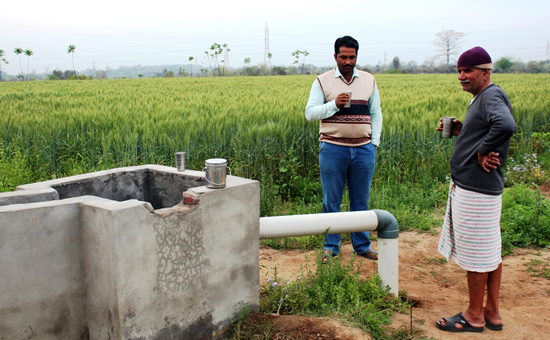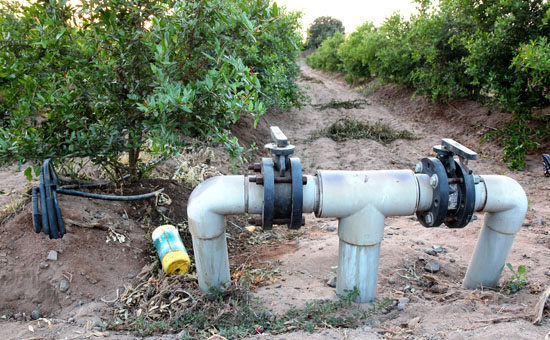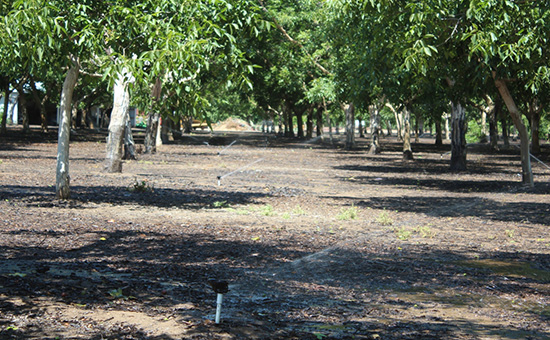- Punjab
has two major problems. Intertwining of religion and politics.
Over-exploitation of groundwater. Unless resolved, Punjab has a bleak future. Resistance
to accept the reality and change has led to the present situation.
Punjab
is in the news again. Farmer’s agitation, Appointment of cricketer Sidhu as PCC
Chief, alleged humiliation of former Chief Minister Singh, appointment of Dalit
CM Channi and now Sidhu’s resignation.
The
problem with those in public life is not knowing when to call it quits. Rare is
the Sunil Gavaskar who quit when at the top. Most are like Kapil Dev (overstayed
in order to reach Hadlee’s record.)
After
becoming Congress’s tallest leader in Punjab and admired for his nationalist
views, Amarinder Singh could have chosen to make way for the next generation.
That is what succession planning is all about. The Congress High Command should
have managed the changeover.
It
is now a clash of egos. Actually, it is a jostling for power. Sidhu wants to
have a say in every appointment and believes control over the party and
government are essential if he has to deliver victory in 2022. His moves could
also be a ploy to keep fellow Jat Sikhs happy because power is seen as passing
on to a Non-Jat.
Actually,
the problems in Punjab go much deeper and are two.
One,
is the intertwining of religion with politics. Two, falling ground water levels,
due to increasing paddy production, threaten Punjab’s prosperity.
The
intertwining of religion and politics concerns Jat Sikhs. They got prominence
with the advent of the Maharaja Ranjit Singh’s rule and victories against the
Afghans. Further, the British were grateful to the Sikh princes for assistance
received during the mutiny of 1857 and seeing the bravery of Sikh armies
realised, that they could be an effective buffer between Afghanistan and India.
Thereafter,
British wooed Sikhs, made caste the basis of land ownership and tacitly supported
the division of Punjab into Sikh and Hindu. Also
read
How
the British Divided Punjab into Hindu and Sikh
The Akalis entered into a dispute with the British for the control of
Sikh gurudwaras. In 1925, the Sikh Gurudwaras Act was passed which gave Sikhs
(primarily Jaat Sikhs) control over all the Gurudwaras in undivided Punjab. By virtue of its
control over gurudwara affairs and revenue, Shiromani Gurudwara Prabandhak Committee (SGPC) became an
important body. The Akalis are yet to
relinquish control since 1925.
Thereafter, control of Sikh religious affairs is key to political power
in Punjab. “It is often said in Punjab, one who controls
the gurdwaras, rules the state.” Source
On
becoming chief minister in 1972, Zail Singh tried hard to wrest control of the
SGPC and used every opportunity to placate Sikh religious sentiments and assert
Sikh identity. In order to regain the initiative, the Akali Dal Working
Committee passed the Anandpur Sahib Resolution in 1973.
Since then this pattern of politics, competitive communalism and
brinkmanship, has been the hallmark of Punjab.
Captain
Singh too tried to gain a foothold in Sikh religious affairs by using the
opening of the Kartarpur Corridor but failed. Also
read
Captain’s
gameplan on Kartarpur Corridor
 India must focus on Traditional Varieties of Rice. Cr Bio-Basics.
India must focus on Traditional Varieties of Rice. Cr Bio-Basics.
Thus,
the Jat Sikh community became powerful by virtue of being land owners-farmers (aided
by the Green Revolution) and control over Sikh religious affairs.
Until religion and politics are delinked, Punjabi society and
politics will be unstable.
Actually,
this mixing of politics and religion was started by Guru Har Govind (1606 to
1644), after the martyrdom of his father Guru Arjun, who hung two swords by his
side signifying Piri and Miri, one symbolised the spiritual power
and the other temporal (political). The concept of spiritual and temporal power
worked very well when the Mughals ruled but in Independent India!
A
related issue is the SGPC trying to distance modern day Sikhism from its Hindu
roots. They are quiet about Sikh conversions to Christianity but protest
vehemently when told of their origin in Sanatana Dharma. Also read Is
modern day Sikhism a colonial construct?
Perhaps
if Sikhism came closer to Hinduism, Sikhs would be considered the majority
community in Punjab (stated by the Punjab High Court but appeal pending in
Supreme Court.) Then SGPC schools would be unable to avail of constitutional
benefits given to minority schools.
I
hold nothing against my Punjabi Jat Sikh brothers and sisters but some things
need to be told.
Since
farmers are predominantly Jat Sikh and the community powerful successive
governments have wooed them with sops for e.g. Akali-BJP government declared
free power to farmers in 1997-98. In FY20-21, free
power is expected to cost Rs 8,275
crore leaving fewer resources for needy
programs in an agrarian state.
Free power has hurt Punjab’s agriculture,
depleted water resources by encouraging paddy cultivation, added to farmers’
production cost by forcing the installation of submersible pumps and curtailed
industrial activity during the paddy season.
 Using ground-water in Punjab.
Using ground-water in Punjab.
According to a 2017 article
in Tribune, Agricultural scientist SS
Johl and veteran I M Singh, “Environmental damage is incalculable as rice crop
is the major contributor to pollution of aquifers and damage to the ecosystem.”
It takes more than three times the water to grow paddy in
Punjab compared to the flooded plains of Bihar or West Bengal. Yet!
Today “Punjab comes in
the category of water-stressed states, with 105 of 138 blocks being categorised
in the dark
zone” and "about
3 million acres are cultivated for paddy in Punjab and 20 million tonnes of
stubble are generated every year, said Jasbir Singh Bains, the state's director of agriculture in 2017.”
Farmers should know
that Punjab will be rendered a
desert within 25 years if the exploitation of its underground water resources
continues at the current rate, according to a draft report of the Central
Ground Water Board (North-Western region).
Free power and guaranteed procurement
of paddy by the Food Corporation of India at MSP have promoted paddy
cultivation in Punjab and discouraged cross diversification.
As a result, the area under paddy grew
by 30% between 1990-91 and 2000-01, and 51% between 1990-91 and 2016-17 (E).
We Punjabis are not rice eaters. Rajma and Kadhi Chawal
are two favourites, period. But, was Punjab always a rice producer?
Area
under Paddy in Punjab
|
Year
|
Area‘000 hectare
|
|
1. 1960-61
|
227
|
|
2. 1970-71
|
390
|
|
3. 1980-81
|
1183
|
|
4. 1990-91
|
2015
|
|
5. 2000-01
|
2611 Free Power
|
|
6. 2010-11
|
2831
|
|
7. 2016-17 (E)
|
3046
|
Source
In 1961, the area under paddy was only 2.27 lakh
hectares against 30.46 in 2016-17. Earlier farmers cultivated bajra, sugarcane,
jowar etc. Actually till “about hundred years ago, rice was grown largely in
eastern and southern India, where rainfall was high and water plentiful.” The
Green Revolution changed that.
Jat Sikh farmers showed
great resolve, willingness to change and entrepreneurship in adopting to new
technology and increased production of rice and wheat significantly. But that
was in the 1960’s.
It is to offer price
security and perhaps out of gratitude that the government of India is buying
rice and wheat at MSP inspite of its godowns being full. Further, procurement is also skewed in favour of
Punjab, Haryana and Andhra Pradesh, which accounted for 54% of the total rice
procured by FCI in 2017-18, with Punjab accounting for 32.7% of the 36.18
million metric tonnes procured.
This love for selling at MSP means zero risk on
price. MSP has encouraged Punjab farmers to grow cotton and sugar-cane (a water
guzzler). Pesticides are mainly used by farmers who grow rice and
cotton.
 Drip Irrigation in Kutch. Not popular in Punjab.
Drip Irrigation in Kutch. Not popular in Punjab.
The
cause of Punjab problems are over-exploitation of groundwater, over-use of pesticides,
intensive farming and a damaged ecosystem. Fifty plus years of MSP have created
vested interests that want status-quo.
Actually, depleting water levels and
cancer cases (Cancer
Train) is what
farmers and politicians should be talking about. But, it is all about Elections
2022.
Further, vested
interests are opposing transparency for e.g. Farmer unions are objecting to the Centre’s
directive to state government to upload land records on the portal so that name
of land owner and seller of produce can be matched. This way name of actual
owner will be known. That is perhaps what the unions do not want the Centre to
know.
Somewhere Punjabi
farmers have lost their entrepreneurial spirit. I remember meeting Didar Singh
Bains, known as Peach King of California, who spoke of his challenging journey.
He uses drip-irrigation in water starved Yuba City area, something that not many
Punjabi farmers do.
 Micro-irrigation on D S Bains farm, Yuba City, USA.
Micro-irrigation on D S Bains farm, Yuba City, USA.
Solutions are known.
Noted agricultural economist Ashok Gulati recently wrote, “Wisdom lies in investing more in animal
husbandry (including fisheries) and fruit & vegetables” but these offer no
assured returns.
Wish the Apex Court decides on the legality
of the farm bills, makes public report of farm panel it appointed and lets the
government govern.
Also read by late Sunil Jain This
is about politics, not farmer rights
Unless Punjab separates religion from
politics and reduces area under paddy cultivation, no Chief Minister can save
Punjab.
Punjab needs a leader who thinks beyond vote-bank
politics and stops farmer appeasement whilst addressing genuine concerns. If
Punjab fails, it would be a sad day for Punjabis worldwide, a community that
successfully rebuilt its life post Partition.
Also read
1.
Make
every drop of water count for sustainable agriculture
2.
Make
the most of Supreme Court’s farm panel
3.
How
poor land records add to farm frustration
4. Rationalise
Power subsidy in Punjab – Montek Panel
5. Downside
of Punjab style – Fertiliser based farming
6. Traditional
varieties of Rice
7. What
is the real problem in Punjab
8. Why
Punjab is angry
9. Punjab’s
economy needs reforms